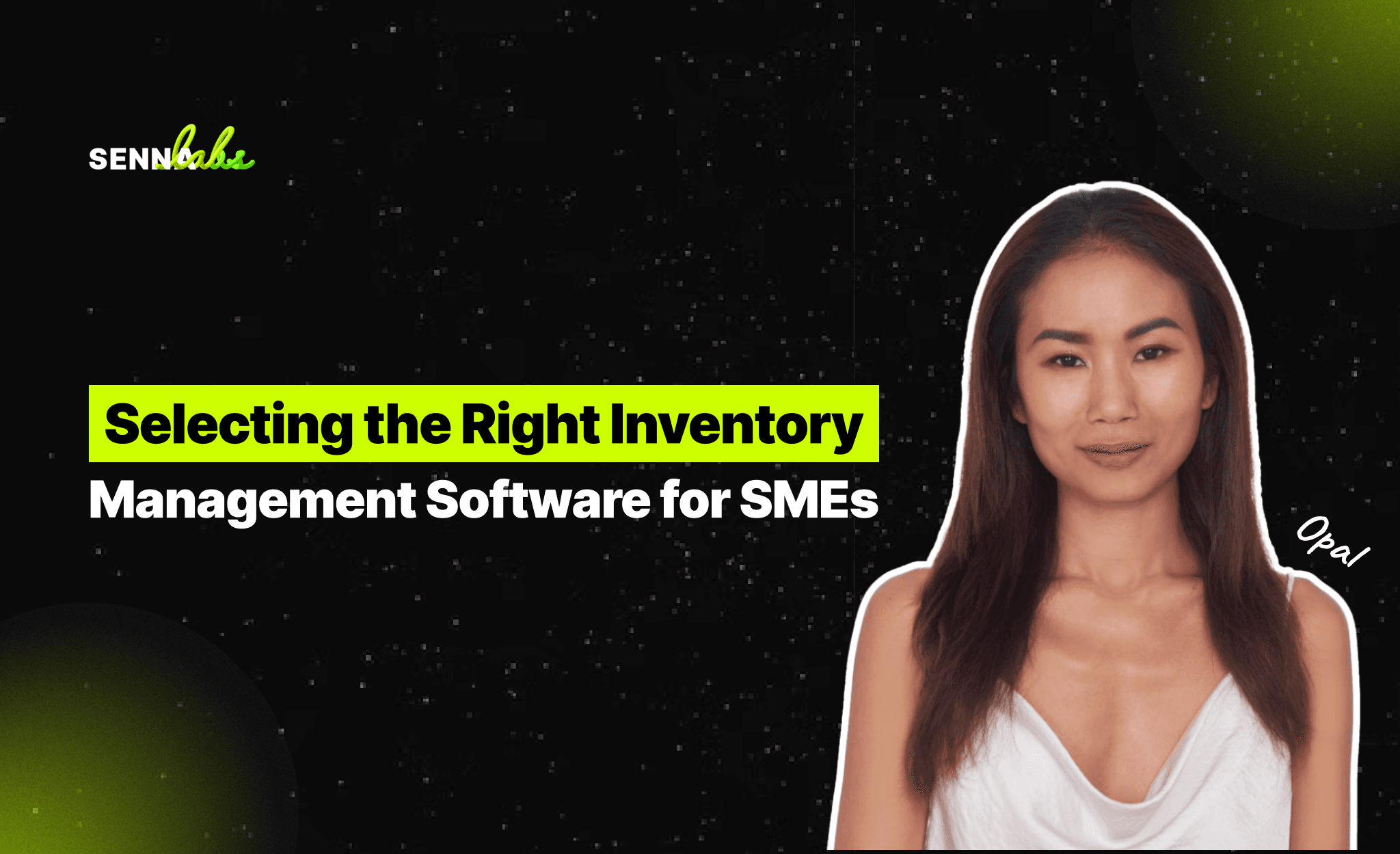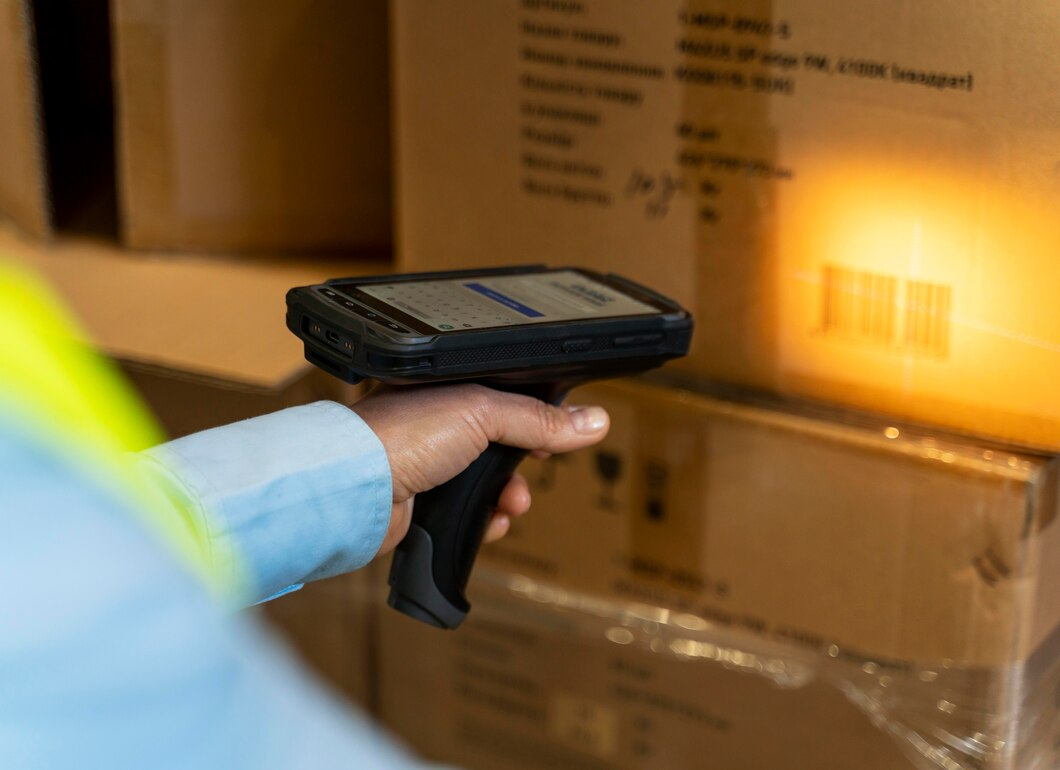Selecting the Right Inventory Management Software for SMEs
Share

Introduction
Use Case: Real-Time Stock Tracking for an Online Clothing Store
For small and medium-sized enterprises (SMEs), inventory management is a critical component of business success. Without an efficient system in place, businesses risk overselling, understocking, financial losses, and unhappy customers. Whether operating a brick-and-mortar store, an e-commerce business, or a combination of both, having real-time visibility into stock levels is essential to maintaining smooth operations.
Inventory management software provides SMEs with an automated solution to track stock levels, sync inventory across multiple sales channels, receive restock alerts, and prevent mismanagement. This article explores the importance of inventory management software, key features to consider, and how an online clothing store successfully optimized stock tracking with an automated inventory system.

Why SMEs Need Inventory Management Software
Manually tracking inventory using spreadsheets, paper records, or standalone databases can be time-consuming and error-prone. Common inventory management challenges faced by SMEs include:
-
Overselling stock, leading to canceled orders and customer dissatisfaction.
-
Understocking inventory, causing missed sales opportunities.
-
Lack of real-time stock updates, resulting in inaccurate inventory counts.
-
Difficulty managing stock across multiple locations or sales channels.
-
Inefficient restocking processes, leading to delayed supplier orders.
By adopting an automated inventory management system, SMEs can improve stock accuracy, reduce waste, and enhance overall business efficiency.
Key Features to Look for in Inventory Management Software for SMEs
1. Real-Time Inventory Tracking
-
Provides up-to-date stock levels across warehouses, stores, and online platforms.
-
Prevents overselling and stock shortages by updating inventory in real time.
2. Multi-Channel Inventory Syncing
-
Ensures stock is updated across e-commerce platforms (Shopify, WooCommerce, Amazon, etc.).
-
Prevents inventory mismatches when selling across multiple channels.
3. Automated Stock Alerts and Restocking
-
Sends low-stock notifications to avoid running out of popular products.
-
Automates purchase order creation when inventory reaches a set threshold.
4. Barcode Scanning and SKU Management
-
Helps with quick and accurate inventory tracking in warehouses or retail stores.
-
Simplifies product categorization, bundling, and reordering processes.
5. Order Management and Fulfillment Integration
-
Syncs with order management systems to track incoming and outgoing stock.
-
Helps SMEs fulfill orders faster and with fewer errors.
6. Analytics and Forecasting Tools
-
Provides insights into best-selling products, seasonal trends, and inventory turnover rates.
-
Helps businesses forecast demand and optimize purchasing decisions.
7. Cloud-Based Access and Mobile Compatibility
-
Allows businesses to track inventory remotely from any device.
-
Ensures warehouse staff can update stock levels on the go.
Use Case: Real-Time Stock Tracking for an Online Clothing Store
Challenges Faced by the Fashion Retailer Before Using Inventory Software
-
Frequent Stockouts and Overselling
-
The store sold products online and in physical retail locations, but inventory updates were manual and inconsistent.
-
Popular items frequently sold out online but were still listed as available, leading to order cancellations and refund requests.
-
-
Slow and Inefficient Restocking Process
-
The business had no real-time insight into stock levels, making reordering difficult.
-
Suppliers received delayed purchase orders, causing longer lead times and potential revenue loss.
-
-
Difficulty Managing Multi-Channel Sales
-
The brand sold on Shopify, Instagram, and Amazon, but stock updates weren’t synchronized.
-
Customers purchased items that were no longer in stock, leading to complaints and negative reviews.
-
-
Lack of Sales and Demand Forecasting
-
Overstocking slow-moving products tied up cash flow, while fast-selling items ran out too quickly.
-
The store had no way to predict future inventory needs based on sales trends.
-
How Inventory Management Software Solved These Issues
-
Real-Time Stock Syncing Across Sales Channels
-
The inventory software automatically updated stock levels across Shopify, Instagram, and Amazon, preventing overselling.
-
-
Automated Restocking and Purchase Orders
-
The system sent low-stock alerts and automatically created supplier purchase orders.
-
Reduced the risk of stockouts and late restocking by ensuring timely supplier communication.
-
-
Multi-Location and Warehouse Management
-
The software tracked inventory across different warehouses, ensuring accurate distribution.
-
Allowed the retailer to transfer stock between locations based on demand.
-
-
Data-Driven Sales Forecasting
-
AI-powered analytics predicted demand for products based on past sales trends.
-
Helped the business optimize inventory purchases and avoid overstocking.
-
Results After Implementing Inventory Management Software
-
Stock accuracy improved by 95%, preventing overselling.
-
Reorder efficiency increased by 40%, reducing stock shortages.
-
Sales forecasting accuracy improved, minimizing wasted inventory.
-
Customer complaints about out-of-stock items decreased by 50%.
How to Choose the Right Inventory Management Software for Your SME
1. Assess Your Business Needs
-
Do you need real-time stock tracking, warehouse management, or multi-channel integration?
-
Are you selling online, in-store, or through wholesale?
2. Look for Cloud-Based and Scalable Solutions
-
Cloud-based software allows for remote inventory tracking and real-time updates.
-
Choose a system that can grow as your business expands.
3. Prioritize Automation Features
-
Look for software that can automatically generate purchase orders, sync inventory across platforms, and track stock movements.
4. Ensure Integration with E-Commerce and POS Systems
-
The software should integrate with Shopify, WooCommerce, Amazon, and physical store POS systems.
5. Compare Pricing and Customer Support
-
Consider subscription fees, user limits, and additional costs for extra features.
-
Choose a provider with strong customer support and training resources.
Common Mistakes to Avoid When Choosing Inventory Management Software
-
Not Checking for Multi-Channel Compatibility – Ensure the software supports all the sales platforms you use.
-
Ignoring Scalability – Choose a system that can handle future business growth.
-
Failing to Automate Restocking – Not having automated stock alerts leads to stockouts.
-
Skipping Training and Onboarding – Staff need to be properly trained to use the software effectively.
-
Not Utilizing Data Analytics – Businesses that ignore sales trends and demand forecasting risk overstocking or running out of key products.
Conclusion:
For SMEs, choosing the right inventory management software is essential for streamlining stock control, improving order fulfillment, and optimizing purchasing decisions. Whether it’s preventing overselling, managing multi-channel sales, or automating restocking, inventory software helps businesses operate more efficiently and profitably.
The fashion retailer case study demonstrated how adopting a real-time inventory tracking system helped improve stock accuracy, optimize reordering, and prevent revenue losses due to stockouts.
For SMEs looking to enhance inventory management and business efficiency, investing in the right inventory software is a critical step toward scalability, profitability, and long-term success.

Share

Keep me postedto follow product news, latest in technology, solutions, and updates
Related articles
Explore all


